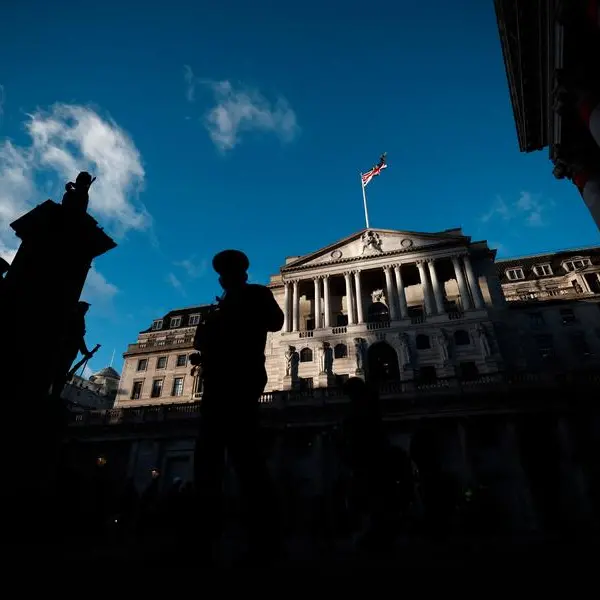PHOTO
The Quarter 2 2024 (Q2 ‘24) statistics released by South Africa’s foremost home-loan comparison service, ooba Home Loans, reveal that the residential property sector is now poised for a steady recovery, with some of the most interesting developments taking place among homebuyers aged 18 to 25.
“The imminent rate cuts as well as the political stability and expected market friendly economic environment linked to the establishment of the Government of National Unity (GNU) will lend momentum to the recovery in the coming months,” explains Rhys Dyer, chief executive officer of ooba Group.
Purchase prices unpacked
“While there are some signs of recovery in property prices, the recurring theme in our Q2 ‘24 statistics reveal that real property-price growth remains in the negative territory as a result of still elevated inflation,” says Dyer, pointing to both the national and first-time homebuyer purchase prices which have both shown marginal nominal price growth year-on-year at 2.3% and 2.7% respectively.
“However, when compared to the last quarter, both the national and first-time homebuyers’ average purchase price has in fact dipped,” said Dyer. The national average purchase price, now at R1,458,924, has dropped by 1.4% on last quarter while the first-time homebuyers’ average purchase price is down by 1.8% on the last quarter - now at R1,150,238.
“This result could be due to potential homebuyers making more conservative purchases pre-elections and pre-interest rate cuts.”
The country’s frontrunner, the Western Cape registered the strongest growth in Q2 ‘24 across both the first-time and repeat-homebuyer categories (7.8% and 6.3% nominal increases respectively) and is the only region to record real (inflation-adjusted) increases in property prices. Conversely, KwaZulu Natal saw the largest decline in both the first-time and repeat homebuyer categories (-6.3% and -7.2% respectively).
Regions recording a year-on-year nominal increase in the average purchase price include Limpopo, Free State and the Eastern Cape while Mpumalanga – most notably - a strong contender in the past, has slipped into the negative territory.
In the first-time homebuyer’s category, other strong contenders in the average purchase price include Gauteng South & East, Free State and Limpopo while the Eastern Cape, Tshwane & North West and Mpumalanga have experienced sharp declines.
Meanwhile, the Free State registered the lowest average purchase price overall for Q2 ‘24 at R1.01m.
Younger homebuyers are spending more
In an interesting new development, Dyer highlights growing interest from homebuyers aged 18 to 31. “A greater percentage of younger homebuyers is leveraging property as a wealth-building strategy and is in fact spending more year-on-year,” says Dyer.
“Buyers aged 26 to 30 registered the strongest annual price growth in the average purchase price - at 4.2%- a clear indicator that they are prioritising homeownership and are making financially savvy investment decisions.”
In comparison, Dyer notes that homebuyers aged 37 and older are paying 2.1% less than last year, reflecting increasing financial pressure on households and resulting in some ‘buying down’ to save on monthly home-loan repayments.
FNB’s Q2 ‘24 property data attributes approximately 21.7% of home sales to ‘downscaling due to life stage’ and 21.5% of home sales to ‘downscaling due to financial pressure’. “While reasonings vary, we would speculate that much of the activity can be attributed to downscaling to save money, downscaling as a result of children leaving home and downscaling to a retirement estate.”
First-time homebuyers continue to ‘wait it out’
The natural decline of first-time homebuyers in a high interest-rate environment continues with the prized segment now accounting for 46% of ooba Home Loans’ application intake for Q2 ‘24 – down from 48% a year ago and 56% at the peak of the homebuying frenzy in May 2020.
“Albeit one-year younger year-on-year, now at 35, the prevailing trend among impending first-time homebuyers is to wait until such a time as interest rate and inflationary pressures ease.”
“However, our data has shown that when they do decide to purchase, they are in fact spending more which might indicate that they are simply setting aside more time to save in an effort to reduce their monthly repayments,” says Dyer, pointing to a 30% increase in the average purchase price paid by homebuyers aged 18 to 25 over the past five years.
And while first-time homebuyer demand weakened across all regions, the Free State registered the highest percentage of applications for first time homebuyers for the quarter, largely driven by low prices. “The Free State is the only region in which the average purchase price for first-time homebuyers is below R1m (R889,099 for Q1 ‘24 and R859,125 for Q2 ‘24),” he shares.
In contrast, the average price paid by a first time homebuyer in the Western Cape (R1.54m) exceeds that of the average national purchase price. “With property prices spiralling upwards in this region, it comes as no surprise that the Western Cape recorded the lowest level of first-time home buying activity in Q2 ‘24.”
Source: Supplied.
Banks soften deposit requirements
The national average deposit is tracking lower year-on-year, now at R92,673 (6.4% of the average purchase price) - down by 23.8% from Q2 ‘23’s average deposit of 8.4%. The national average approved bond size has increased by 4.6%, exceeding the increase in the national average purchase price, which rose by only 2.3%.
“This indicates that the country’s major banks remain invested and confident in the property market and are still lending at high loan to values,” states Dyer.
“This is particularly evident in the Q2 ‘24 Loan-to-Value (LTV) data for applicants aged 37-plus where the category received significantly more generous loans relative to value (up by 5.2% year-on-year). This could be the bank’s way of stimulating activity among the largest portion of the market.”
In the first-time homebuyer segment, Dyer commends homebuyers for putting down larger deposits than their more established second-time homebuyer counterparts in Q2 ‘24.
“Despite a sharp downturn of 11% quarter-on-quarter (now at 9.7% - R111,279), the average deposit paid by a first-time homebuyer still exceeds that of the average of all homebuyers at 6.4% (R92,673). There is also a commendable improvement of 1% year-on-year in this market segment.”
Banks’ hot competition is a boon for buyers
Bank approval rates remain steady, recording only a minor dip year-on-year. “This is an indication that the banks’ lending appetite is still robust, and that homebuyers’ affordability has stabilised with the interest rates remaining unchanged since May 2023,” says Dyer.
The ratio of applications declined by one bank but approved by another is trending slightly lower year-on-year - down from 45% in Q2 ‘23 to 43.7% in Q2 ‘24. However, Dyer reiterates the critical role that companies like ooba Home Loans play in making the dream of homeownership attainable.
“There is no doubt about it: shopping around will help you secure the best deal on your home loan,” he says. “Amid tough conditions, ooba Home Loans still managed to achieve a higher discount in the prime lending rate for their customers (now at prime less 0.56% on average, an improvement from the prime less 0.41% on average in Q2 last year).”
In the prevailing ‘higher for longer’ interest-rate environment, Dyer highlights the banks’ unwavering commitment to continue to lend which continues to drive positive outcomes for the sector. “The banks continue to deliver on steady approval rates and improved rate discounts as they compete for business in a shrinking pool of homebuyers.”
Record investment uptick
The recurring buy-to-let trend in the Western Cape continued in Q2 ‘24. “The Western Cape has been the key driver behind the national surge in investment demand, accounting for 32.4% of all applications received for the region in Q2 24 (up by a healthy 2% year-on-year),” notes Dyer.
Nationally, Q2 ‘24 saw the highest quarterly average (12%) in the percentage of applicants purchasing an investment property – up by 3% from 9% in Q2 ’23.
“While it’s unsurprising to see that the highest demand for investment properties is generated from homebuyers aged 37 and older (accounting for 13.4% of applications (year-to-date)), what may come as a surprise is that the second highest demand stems from buyers aged 18 to 25 which has risen strongly since 2022.
"This is indicative of the generational-wealth strategies that Gen Zs are currently deploying as a generation that greatly values the investment capability of property.”
Looking ahead, Dyer says that while the economic stability we expect the GNU to deliver will not be the silver bullet the property market needs, it has presented the glimmer of hope that the country most certainly needed.
“It’s still early days but the current political outlook is one of the most positive that we have experienced in recent history and it’s showing in the strengthening of the rand and improved investor sentiment.
"This combined with the steadfast support of the banks to generate home-loan business and looming interest-rate cuts will bode well for the sector for the remainder of 2024,” he concludes.
All rights reserved. © 2022. Bizcommunity.com Provided by SyndiGate Media Inc. (Syndigate.info).























